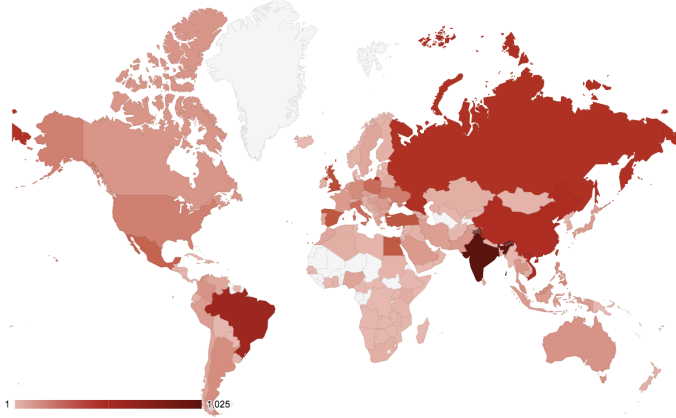Internet-based communication continues to become "ever-increasingly embedded into our daily lives" (Knight, 2015: 20), and as it permeates our everyday communicative activities its significance as a site, or multitude of sites, of language use for L2 learners to engage with grows accordingly. Internet-enabled modes of communication which 20 years ago were limited to a minority of technology enthusiasts have become so ubiquitous as to be "squarely mundane in the business of daily life" (Squires, 2016, p. 1). Furthermore, the explosive growth of smartphone connectivity over the last few years has marked a shift from static information terminals that required users to move to a certain location in order to access online communication media, to portable communication terminals carried, or even worn, by users. This has led to a situation in which we are permanently online and permanently connected (Vorderer, Krömer and Schneider, 2016), inseparable from our channels of telecommunication. Social interaction online is no longer a specialist hobby, but an integral part of a 21st Century identity.
This PhD is concerned with text-based communicative activity mediated by internet-based technologies, under the umbrella term Computer-Mediated Communication (CMC). There is a great deal of research and scholarship examining CMC from a variety of disciplinary perspectives, including communications research, human-computer interaction, sociology and applied linguistics. Terminological debate has been an inevitable by-product: the term CMC arose from work in the field of communication studies, such as Walther (1996), while linguistic approaches to the phenomenon give rise to language-oriented terms, such as e-language (Knight, 2015) and Netspeak (Crystal, 2001). The study of discourse in online environments has been labelled Computer-Mediated Discourse (Herring and Androutsopoulos, 2015). The older term, CMC, is adopted here, reflecting the focus on a broad set of communicative contexts and practices, rather than a language variety or set of discourse characteristics. Baron (2008, p. 12) highlights the fact that much CMC now takes place using devices such as mobile phones that may not be thought of as being computers in the lay sense of the word, and proposes Electronically-Mediated Communication instead. However, for present purposes, the term CMC is retained, with the computer element understood as referring more broadly to the computing technologies that underlie the forms of hardware on which such communication takes place.
For people learning a second language, today's hyper-connectivity has the potential to present new domains of engagement with and exposure to their target language. Exposure to the target language, defined as both the reception of linguistic input and the opportunity for authentic, meaning-driven interaction with other speakers, is accepted as a necessary condition for language learning (Spolsky, 1989), and CMC has the potential to connect learners with expert and non-expert speakers of the target language, regardless of geographical location. Such exposure is not an automatic consequence of access to internet-enabled devices however: the Internet is not a monolithic entity (Pasfield-Neofitou, 2012, p. 7) and learners may continue to be immersed in online networks of speakers of their mother tongue.
A significant body of research exists in the field of Computer-Assisted Language Learning (CALL) that investigates the benefits of using computer-mediated communication in the language learning process, but there has been considerably less work exploring uses of communication technologies in a second language for purely communicative purposes, and the indirect effects such activity has on learning. Small scale studies have investigated use of English outside the classroom (such as Sundqvist (2014), in which the term extramural English is proposed), with a focus on computer-mediated language use, but no large-scale fact-finding of the kind here proposed has been done. This PhD seeks to address this gap.
This PhD thus has two broad aims. Firstly, it seeks to explore English-language digital communication practices among people for whom English is a second or additional language, in order to understand the degree to which such individuals are gaining exposure to English through digital communications media. Secondly, the PhD investigates the effects of such activity on language acquisition, and provides suggestions for how it may be supported by formal language learning.
The PhD will be guided by the following research questions:
The project is being run in collaboration with Cambridge University Press, who, as one of the world's leading providers of English language teaching and learning materials, are keen to understand the impact of online communication on tomorrow's language users and learners. CUP has an increasing emphasis on digital products and online or blended on/offline learning materials, and an ongoing research interest in "how we use, teach and learn written and spoken language, particularly English" . This PhD will help Cambridge to understand the needs of language learners and users in the digital economy, and inform the development of language learning tools that support learners' online activities and exploit them to augment their language learning.
The research will utilise data collected by means of a large scale survey, disseminated via Cambridge University Press's online dictionary website. The survey collected data from respondents in three main areas:
The questionnaire further collected demographic data on respondents, including age, sex, level of English, nationality and country of location, in order to explore the data along these dimensions. Finally, respondents were asked about their attitudes to English-language CMC and it's relation to their language learning.
The questionnaire was promoted on CUP's online dictionary website by means of a hyper-linked banner. The banner remained live for a period of four weeks, during which time a total of 10,354 questionnaire responses were collected, from respondents of 167 nationalities located in 157 different countries worldwide (see map below).

Insights gained from this research will inform the development of language teaching materials that reflect the communicative needs of learners in the hyper-connected 21st century.
This author is supported by the Horizon Centre for Doctoral Training at the University of Nottingham (RCUK Grant No. EP/L015463/1) and Cambridge University Press.